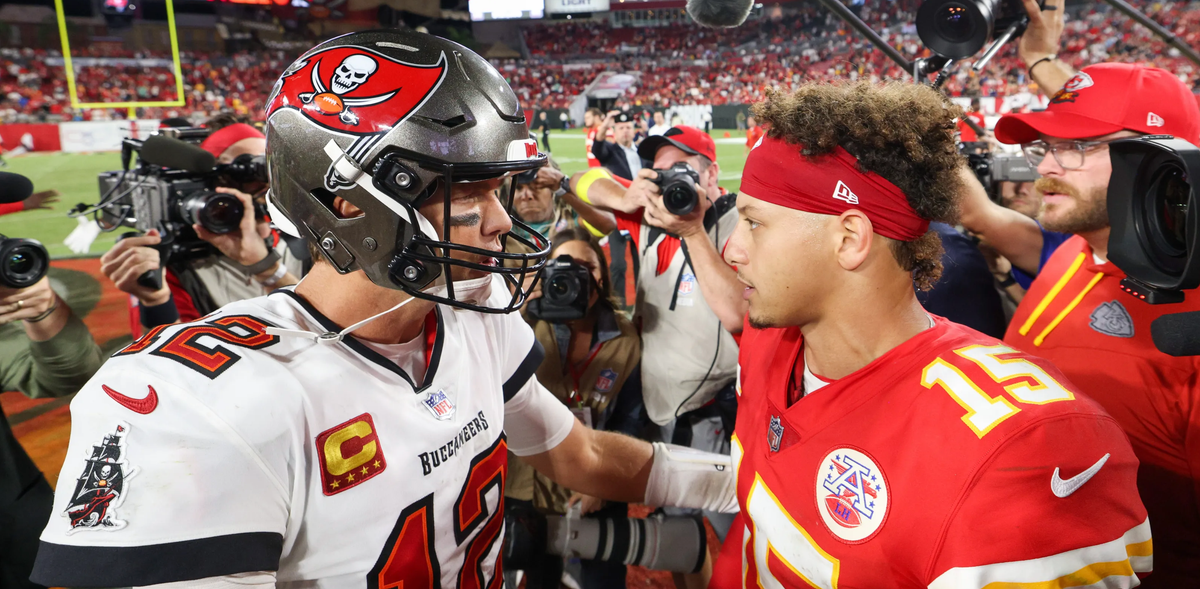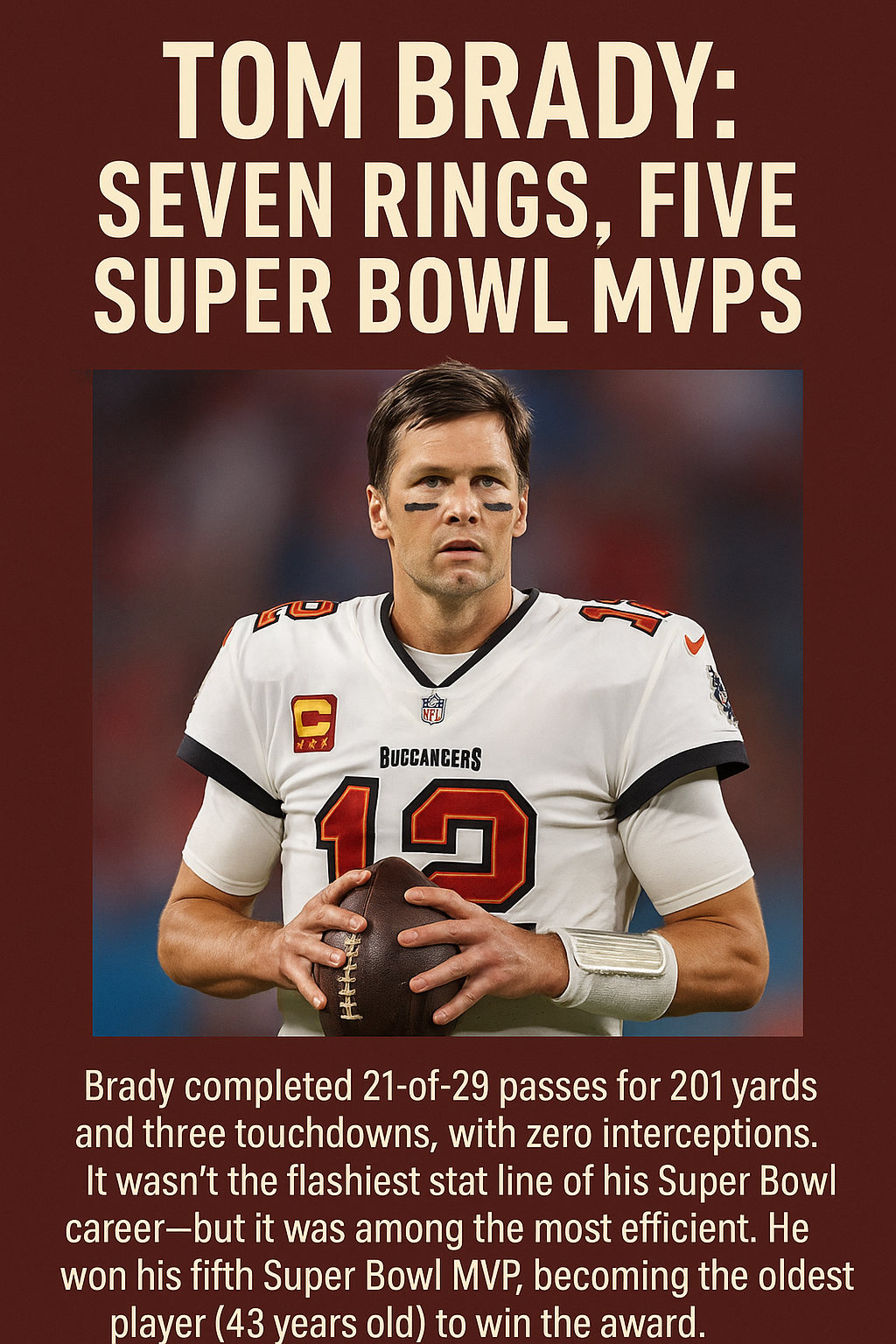Super Bowl LV: Brady’s Bucs Bludgeon the Chiefs in a Defensive Masterclass

Super Bowl LV (55), held on February 7, 2021, at Raymond James Stadium in Tampa, Florida, marked a game of monumental contrasts: legacy versus emergence, dominance versus dysfunction, and brilliance versus bewilderment. The Tampa Bay Buccaneers defeated the reigning champion Kansas City Chiefs 31–9 in a stunning upset that rewrote narratives and solidified Tom Brady’s already unmatched legacy.
The Matchup: Dynasty in Waiting vs. the Greatest of All Time
Coming into the game, most analysts and fans anticipated a high-scoring shootout between the seasoned veteran Tom Brady and the league's young superstar Patrick Mahomes. The Chiefs, fresh off their Super Bowl LIV win, entered as slight favorites behind Mahomes' explosive offense and head coach Andy Reid’s creative play-calling. Meanwhile, the Buccaneers were riding a late-season wave of momentum, having won three straight road playoff games to reach the Super Bowl—making history as the first team to play in a Super Bowl hosted at their home stadium.
But no one expected what happened next: a dismantling of the Chiefs’ offense and a surgical execution of game plan perfection from Brady and the Bucs.
First Quarter: Setting the Tone
Tampa Bay opened with balance and control. Brady connected with his longtime favorite target, Rob Gronkowski, for an 8-yard touchdown in the first quarter—reigniting a connection that had already earned three rings in New England. It was the first time in Super Bowl history that Brady and Gronkowski had scored a touchdown for a team other than the Patriots.
The Buccaneers’ defense, orchestrated by defensive coordinator Todd Bowles, immediately revealed its blueprint: pressure with four linemen, man coverage behind, and contain Mahomes without blitzing heavily. It worked to perfection.
Second Quarter: Gronk Spike, Round Two
Brady and Gronk struck again in the second quarter with a 17-yard touchdown, giving the Buccaneers a 14–3 lead. It was vintage Patriots, only in pewter and red.
Then came a controversial and momentum-swinging moment: after a series of penalties against Kansas City extended a Buccaneers drive, Brady hit Antonio Brown for a 1-yard touchdown with just six seconds left in the half. The Bucs went into halftime up 21–6.
“The first half was a masterclass in situational football,” said James Barclay of the Super Bowl Historical Society. “Brady didn’t just play the position—he played the game itself, manipulating the clock, the coverage, and even the penalty flags.”
Halftime Adjustments—and Misses
Much of the anticipation hinged on whether Kansas City could make second-half adjustments. After all, Mahomes had a reputation for dramatic comebacks, none more famous than the 24–0 deficit he erased against the Texans in the 2019 playoffs.
But this was different.
The Buccaneers’ defense, led by linebackers Devin White and Lavonte David, suffocated the Chiefs’ short passing game. Kansas City’s offensive line, missing both starting tackles, crumbled under relentless pressure. Mahomes spent much of the game running backward, often scrambling for his life. According to Next Gen Stats, he ran a staggering 497 yards behind the line of scrimmage trying to evade pressure.
Third and Fourth Quarters: Defining Dominance
Leonard Fournette, nicknamed “Playoff Lenny,” capped off a punishing third-quarter drive with a 27-yard touchdown run that extended the Buccaneers’ lead to 28–9. Fournette finished with 135 total yards and 1 touchdown, justifying Tampa Bay’s offseason gamble on the former Jaguars running back.
Meanwhile, Mahomes—despite Herculean efforts—could not connect with his receivers. Whether it was drops, tight coverage, or desperation throws while horizontal, the Chiefs could not find the end zone. Not once. This was the first game in Mahomes’ career as a starter in which his team failed to score a touchdown.
Ryan Succop added a 52-yard field goal to seal the final score at 31–9. The rest was merely ceremony.
Tom Brady: Seven Rings, Five Super Bowl MVPs
Brady completed 21-of-29 passes for 201 yards and three touchdowns, with zero interceptions. It wasn’t the flashiest stat line of his Super Bowl career—but it was among the most efficient. He won his fifth Super Bowl MVP, becoming the oldest player (43 years old) to win the award.
“Brady was never chasing ghosts,” said Maria Delgado of the Super Bowl Historical Society. “He was writing his own mythos, chapter by chapter. And on that night, he shut the door on any debate: He’s the greatest to ever do it.”
Brady now had more Super Bowl wins than any single NFL franchise. His ability to immediately shift the culture in Tampa Bay, a team that hadn’t made the playoffs since 2007, was testament not just to his skill but to his leadership and relentless drive.

Key Performers
- Rob Gronkowski: 6 receptions, 67 yards, 2 TDs
- Leonard Fournette: 16 rushes, 89 yards, 1 TD; 4 catches, 46 yards
- Antonio Brown: 5 catches, 22 yards, 1 TD
- Devin White: 12 tackles, 1 INT
- Shaquil Barrett & Jason Pierre-Paul: Constant pressure with a combined 3 sacks
Mahomes, meanwhile, finished 26-of-49 for 270 yards and two interceptions. The numbers hardly reflect his effort, as he repeatedly threw near-impossible passes while being hit or running for cover. His receivers dropped multiple passes in the end zone, including one off a helmet.
Todd Bowles’ Defensive Genius
Much credit goes to the Bucs’ defensive coordinator, Todd Bowles. He devised a game plan that perfectly neutralized the Chiefs’ speed and misdirection. Tampa Bay played two-deep safety shells all night, daring the Chiefs to beat them underneath while the defensive line pressured Mahomes without needing to blitz.
It was a masterpiece in schematics and discipline. Every player on the Buccaneers' defense seemed faster, more aggressive, and more prepared.
Legacy Cemented
With the win, Brady not only solidified his own place in history but elevated head coach Bruce Arians—who became the oldest head coach (68) to win a Super Bowl—and general manager Jason Licht, who assembled the star-studded yet cohesive roster.
The victory also represented a full-circle moment for the Buccaneers franchise. Their last Super Bowl win came in 2002 (Super Bowl XXXVII), also behind a dominant defense. Now, two decades later, they had joined the ranks of teams with multiple titles.
Aftermath: What Changed
For the Chiefs, the loss was a harsh lesson in humility and offensive line importance. They revamped their O-line in the offseason, trading for Orlando Brown Jr., signing Joe Thuney, and drafting Creed Humphrey.
For the Buccaneers, the offseason strategy was “run it back.” All 22 starters returned for the 2021 season—a feat almost unheard of in the salary cap era.
Conclusion
Super Bowl LV was not the high-octane shootout many expected. It was a coronation—a defensive masterclass wrapped in a QB clinic. Tom Brady didn’t just win another title; he transformed a long-suffering franchise in a single year and redefined what’s possible for athletes past the age of 40.
As the confetti rained down over Raymond James Stadium, the message was clear: Brady’s greatness is not just about numbers or trophies. It’s about will, preparation, and the refusal to yield.
And on that night, once again, he stood alone at the summit.
